Friday, November 19, 2010
by vntopic
| Making Origami Puzzles - Michael G. LaFosse | |||
| Author | Michael G. LaFosse | |
| Publisher | PowerKids Press (July 30, 2004) | ||
| Pages | 24 pages | ||
| Description | Making Origami Puzzles by Michael LaFosse is a very interesting origami book which I recommend for older children. All the origami models in this book are made with 2 or more pieces of paper. The "puzzle" is to figure out how to assemble the pieces to form the origami model shown.
| ||
| Cover Link | Click to Cover | ||

The first model (Eight Sided Puzzle) is a pretty little ornament made with 4 sheets of paper. This model is the easiest one to puzzle out. Tip: make the units small enough so that they fit into the palm of your hand. This will allow you to hold the pieces firmly as the model is assembled.
The Tulip Box only uses two sheets of paper. This model is not hard to assemble, but does require a bit of tinkering to get the inserts (called "tabs") to slide nicely into the slots (called "pockets").
The Open Box Puzzle is interesting: it is in the shape of a box with an open. However, it is not exactly a box because the bottom is not locked and can open & closed freely. Folding of the 3 pieces (called "units") is easy and assembly is not hard. Very cute to make and see, but will probably not actually hold anything.
The Celebration Puzzle Box is made with six sheets of paper. This box does lock but only loosely. It can easily be disassembled by tossing it into the air and giving it a light tap with your hands. If you put confetti inside, then it would be like a celebration! The units are easy to fold but assembly of the box so that it has the pattern shown is a challenge.
by vntopic
| Origami Activities - Michael G. LaFosse | |||
| Author | Michael G. LaFosse | |
| Publisher | Tuttle Publishing; 1 edition (October 15, 2003) | ||
| Pages | 64 pages | ||
| Description | Children will have hours of fun with the 15 projects in this beginner origami book, designed to introduce them to the exciting world of paper-folding. A crane, a bat, and a lotus-topped gift box are just a few of the simple projects for first-time paper folders. The book includes an introduction to origami that explores its history, the kinds of paper used, preparation, and basic folding techniques. Each of the projects explores a different aspect of Asian culture. Origami is a wonderful way to stimulate a child's imagination and their interest in Asian art.
| ||
| Cover Link | Click to Cover | ||
If you have more information about it, please comment here - thank you.
by vntopic
| Making Origami Cards - Michael G. LaFosse | |||
| Author | Michael G. LaFosse | |
| Publisher | Published in 2004 by The Rosen Publishing Group | ||
| Pages | 24 pages | ||
| Description | Making Origami Cards by Michael LaFosse is one book of a 12-volume set. This volume is one of the weaker ones in the series: the book tells you how to make simple origami models and then glue them in front of a blank card. The origami models are simple and there are only 8 cards featured. Thus , all in all, the book doesn’t give a whole lot of punch for its hefty price. Though, there are a few noteworthy pearls | ||
| Cover Link | Click to Cover | ||

LaFosse begins the book by teaching you how to fold a rectangular piece of paper into a the basic “Pocket Card”. This first model is quite nice and I do appreciate it for its simplicity and beauty. However, the author uses two-colored rectangular paper to make the card. Duo-color paper that is rectangular in shape is fairly rare. The only recommendation I have is to use wrapping paper that is cut to size. Your Pocket Cards will still look wonderful with single-colored paper; however, much of the charm of the examples in this book is augmented by the duo-tone paper.
The Origami Heart Card, the Origami Flower Card, and the Origami Plant Card all use the Pocket Card as a base. The origami hearts are easy to fold and sticking the hearts onto the Pocket Card creates a simple yet stunning card.
The flowers in the Origami Flower Card are made with two sheets of paper each. They are stacked and then glued onto the Pocket Card.
The pieces in the Origami Plant Card are very easy to fold. As with the above cards, the pieces are glued onto the Pocket Card to make a delightful Christmas-themed card.
The Origami Duck Card is heartwarming in its childlike style. The ducks are very easy to fold and the placement of the elements is pleasing to the eye.
The Origami Pinwheel Card is beautiful in its symmetry and choice of colors (red, white, and blue!). The pinwheels are a little more difficult to fold and may take a few tries before you become proficient in folding them. Keep in mind that you need to make the pinwheels fairly small in order to fit them onto the top of a greeting card.
The Jack-o-lantern Card (along with the Pocket Card) is the only one that is truly novel. Here, a piece of rectangular paper is folded into a pumpkin shape. You draw the facial features with a marker. To read the card, the recipient would have to unfold the pumpkin to see the writing on the back side of the paper. It’s a cute model.
Last but not least, is the Origami Pineapple Card. This pineapple is cute! The off-centered pleating of the paper gives a nice cross-hatched effect. When would you ever make and give a pineapple card? As it turns out, pineapples are a symbol of hospitality - a symbol of welcome. So, pineapple cards can be used to welcome new neighbors or a new baby. LaFosse talks all about it in his brief introduction to the topic.
by vntopic
| Making Origami Birds - Michael G. LaFosse | |||
| Author | Michael G. LaFosse | |
| Publisher | Published in 2004 by The Rosen Publishing Group | ||
| Pages | 28 pages | ||
| Description | Making Origami Birds by Michael LaFosse is a pretty basic origami book with a nice selection of origami models. There is a range of birds featured, all of them made from a single sheet of paper and 7 of the 8 models use a square sheet of paper. | ||
| Cover Link | Click to Cover | ||


If you have more information about it, please comment here - thank you.
Michael LaFosse provides instructions for two simple ducks. The Boat Duck (yellow) is made from a rectangular sheet of paper. LaFosse suggests other paper options such as waxed paper so that the ducks can float on water.
The penguin is sure to capture a child's imagination: first of all, penguins themselves are interesting birds since they don't fly and live exclusively in the southern hemisphere. This origami penguin can move across the table if you blow it gently.
The origami Swallow is like a paper airplane: you can launch it and it will glide across the room. The layers of paper get thick and it may be difficult for children to make the last few folds. Thin paper is recommended.
Pajarita is a classic origami model from Spain. The model is not hard to fold, but conversion of the folded paper to look like pajarita is tricky. Pajarita (which means "small bird" in Spanish) is a classic that every origami enthusiast should learn at some point in their life.
The Hooting Owl is perhaps the least satisfying model in the book. On one hand, it is a treat to have instructions to make a paper owl: and this one can be used as a bookmark too. However, the model is finicky to fold and the final model does not look very convincing.
The Macaw and the Phoenix are both clever designs, easy to fold, and look quite interesting too.
Summary
All in all, LaFosse does another fine job in creating an easy-origami book with unique designs that will inspire young and old alike. This book is great for beginner folders and works nicely as one of a 12-volume set.
The penguin is sure to capture a child's imagination: first of all, penguins themselves are interesting birds since they don't fly and live exclusively in the southern hemisphere. This origami penguin can move across the table if you blow it gently.
The origami Swallow is like a paper airplane: you can launch it and it will glide across the room. The layers of paper get thick and it may be difficult for children to make the last few folds. Thin paper is recommended.
Pajarita is a classic origami model from Spain. The model is not hard to fold, but conversion of the folded paper to look like pajarita is tricky. Pajarita (which means "small bird" in Spanish) is a classic that every origami enthusiast should learn at some point in their life.
The Hooting Owl is perhaps the least satisfying model in the book. On one hand, it is a treat to have instructions to make a paper owl: and this one can be used as a bookmark too. However, the model is finicky to fold and the final model does not look very convincing.
The Macaw and the Phoenix are both clever designs, easy to fold, and look quite interesting too.
Summary
All in all, LaFosse does another fine job in creating an easy-origami book with unique designs that will inspire young and old alike. This book is great for beginner folders and works nicely as one of a 12-volume set.
by vntopic
| Making Origami Masks - Michael G. LaFosse | |||
| Author | Michael G. LaFosse | |
| Publisher | PowerKids Press (Jan 2004) | ||
| Pages | 28 pages | ||
| Description | This book has instructions for 8 masks: The Mardi Gras mask is a half mask: it covers the eyes only, leaving the nose and mouth exposed. It is a generic mask with no particular attributes and, as such, it is one of the most versatile masks in this book. The Monster Mask is easy to make and very accommodating. Since no one really knows how a monster looks like, ....
| ||
| Cover Link | Click to Cover | ||
If you have more information about it, please comment here - thank you.


The Mardi Gras mask is a half mask: it covers the eyes only, leaving the nose and mouth exposed. It is a generic mask with no particular attributes and, as such, it is one of the most versatile masks in this book.
The Monster Mask is easy to make and very accommodating. Since no one really knows how a monster looks like, you can make it any way that you like and it will still be a monster (long or short ears, wide or narrow eyes etc).
The cat mask is the most difficult. It requires two pieces of paper (one for the head and one for the whiskers). Note that the eyes on this model are round: it is actually somewhat difficult to cut a perfect half circle, so you may need to make this mask a few times before it is perfect. Unlike monsters, everyone knows how a cat looks like. Thus, any variations on the folds will change the facial features causing it to look (or not look) like a cat.
The Skull Mask is getting a little more difficult to fold since the model is slightly curved and has a bit of a 3D effect.
The Daruma Mask is easy to fold but cannot be worn. In Buddhism, the Daruma Mask is used for making wishes. Make a wish and then draw in the pupils in Daruma's eye. Make another wish and draw in the second pupil. In this mask, you can fold the paper to make the pupil instead of drawing it in.
The Elf Mask is delightful. The folding sequence is relatively easy, but cutting the eye and mouth holes is difficult. The best way to make the eye holes is to make slits in the paper with an exacto-knife or a very sharp knife. These implements are very sharp and can be dangerous; parental help is advised. This mask can be worn in front of the face, but it also looks great in front of a greeting card.
The Bird's Beak Mask is probably the most simple mask in this book. It is a half mask: the bottom half. A child can hold the mask in front of his mouth and pretend that he has a beak. The beak will open and close if you jiggle the sides the right way. You can also use this mask as a toy to pick up crumpled paper or small, lightweight balls.
The Fox Mask is not hard to fold, but does require a few more folds that the above masks. This mask does not have eye holes, but the paper can be pried open to give white eyes on a colored face. A child can wear this mask on top of his head: when he is crawling on all fours, the fox mask will look straight at you.
The Monster Mask is easy to make and very accommodating. Since no one really knows how a monster looks like, you can make it any way that you like and it will still be a monster (long or short ears, wide or narrow eyes etc).
The cat mask is the most difficult. It requires two pieces of paper (one for the head and one for the whiskers). Note that the eyes on this model are round: it is actually somewhat difficult to cut a perfect half circle, so you may need to make this mask a few times before it is perfect. Unlike monsters, everyone knows how a cat looks like. Thus, any variations on the folds will change the facial features causing it to look (or not look) like a cat.
The Skull Mask is getting a little more difficult to fold since the model is slightly curved and has a bit of a 3D effect.
The Daruma Mask is easy to fold but cannot be worn. In Buddhism, the Daruma Mask is used for making wishes. Make a wish and then draw in the pupils in Daruma's eye. Make another wish and draw in the second pupil. In this mask, you can fold the paper to make the pupil instead of drawing it in.
The Elf Mask is delightful. The folding sequence is relatively easy, but cutting the eye and mouth holes is difficult. The best way to make the eye holes is to make slits in the paper with an exacto-knife or a very sharp knife. These implements are very sharp and can be dangerous; parental help is advised. This mask can be worn in front of the face, but it also looks great in front of a greeting card.
The Bird's Beak Mask is probably the most simple mask in this book. It is a half mask: the bottom half. A child can hold the mask in front of his mouth and pretend that he has a beak. The beak will open and close if you jiggle the sides the right way. You can also use this mask as a toy to pick up crumpled paper or small, lightweight balls.
The Fox Mask is not hard to fold, but does require a few more folds that the above masks. This mask does not have eye holes, but the paper can be pried open to give white eyes on a colored face. A child can wear this mask on top of his head: when he is crawling on all fours, the fox mask will look straight at you.
by vntopic
| Picture Perfect Origami - Nick Robinson | |||
| Author | Nick Robinson | |
| Publisher | St. Martin's Griffin; 1st edition (March 18, 2008) | ||
| Pages | 128 pages | ||
| Description | Origami--or paperfolding--dates back many hundreds of years in Japan, but in the last sixty years or so it has developed into a widespread creative art practiced all around the world. Origami instructions are usually given in the form of diagrams with standardized symbols that can be understood by everyone, whatever the language of the folder.
| ||
| Cover Link | Click to Cover | ||
Product Description
Origami--or paperfolding--dates back many hundreds of years in Japan, but in the last sixty years or so it has developed into a widespread creative art practiced all around the world. Origami instructions are usually given in the form of diagrams with standardized symbols that can be understood by everyone, whatever the language of the folder.
For the novice folder, the lack of realism can be confusing, especially when the flat sheet of paper starts to transform into a three-dimensional design. PICTURE-PERFECT ORIGAMI uses photographs to aid clarity and understanding. The book starts by explaining the standard origami symbols and folding sequences in step-by-step photographs, so you can see exactly what you should be doing. The second chapter contains a selection of simple designs, carefully selected and arranged so that you can practice your new skills. As well as featuring the standard diagrams, each model is shown in step-by-step photos, so you can see each folding stage in action. There is also a continuous sequence of photographs running along the bottom of the page that shows exactly what the model should look like at the end of each step--perfect for novice folders.
The last chapter features a selection of slightly more challenging projects, created by contemporary origami designers. Again, the models have been carefully chosen to allow you to develop your folding abilities gradually. Key steps are illustrated with photos. By the time you have finished this book, you will have a solid grounding in origami techniques that will allow you to enjoy the wealth of origami designs that are now widely available--and perhaps even create your own.
- Paperback: 128 pages
- Publisher: St. Martin's Griffin; 1st edition (March 18, 2008)
- Language: English
- ISBN-10: 0312375964
- ISBN-13: 978-0312375966
- Product Dimensions: 11 x 8.4 x 0.4 inches
by vntopic
| Storytime Origami - John Montroll | |||
| Author | John Montroll | |
| Publisher | Dover Publications (March 26, 2009) | ||
| Pages | 120 pages | ||
| Description | Forty-two different models re-create the memorable characters and delightful scenes from “The Ugly Duckling,” “Goldilocks and the Three Bears,” “The Three Little Pigs,” “Humpty-Dumpty,” and “Cinderella.” The variety of forms–ranging from easy to complex–will appeal to origami aficionados at all levels and create hours of fun for crafters. When complete, you will be enchanted with the results!
| ||
| Cover Link | Click to Cover | ||
If you have more information about it, please comment here - thank you.


Storytime Origami




Storytime Origami cover
storytime_contents_1
storytime_contents_2



storytime_contents_3

Storytime scene
by vntopic
| 10 Fold Origami - Peter Engel | |||
| Author | Peter Engel | |
| Publisher | 2009 by Tuttle Publishing | ||
| Pages | 96 | ||
| Description | It's great to see a new book from Peter Engel, author of inspirational Origami from Angelfish to Zen. This book is very different in concept, though, and focuses on folds that are more approachable and less complex than it's older sibling. The overall design quality of the book is very high, with excellent color photographs throughout. | ||
| Cover Link | Click to Cover | ||
If you have more information about it, please comment here - thank you.
Overall Impression
It's great to see a new book from Peter Engel, author of inspirational Origami from Angelfish to Zen. This book is very different in concept, though, and focuses on folds that are more approachable and less complex than it's older sibling. The overall design quality of the book is very high, with excellent color photographs throughout.
The title, however, is somewhat misleading, as the models in the book hardly qualify to be "10-folds". I even feel that this 10-step restriction got in the way of the clarity of the diagrams, which break into "sub-steps" or cram several folds into one step to keep the step-count below ten. For this reason I believe some models may be quite confusing to new folders, which is a shame because the models in this book are pretty good! Some fun themes like food items and a goose that lays golden eggs, solid animals design, and a great chick-in-an-egg make this book essential for the enthusiast.
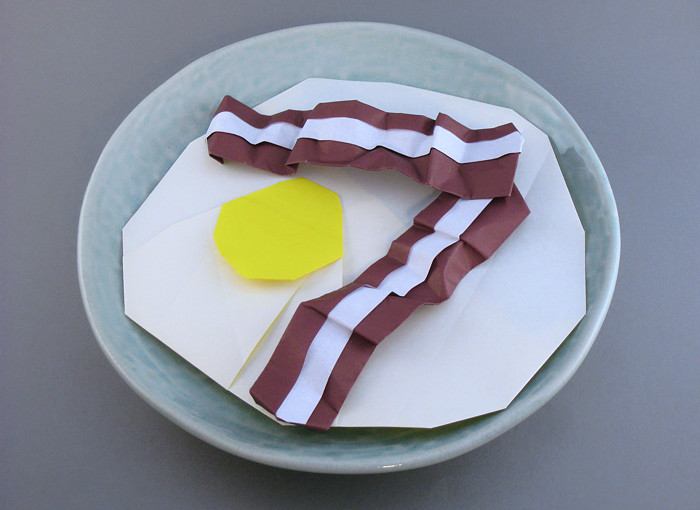
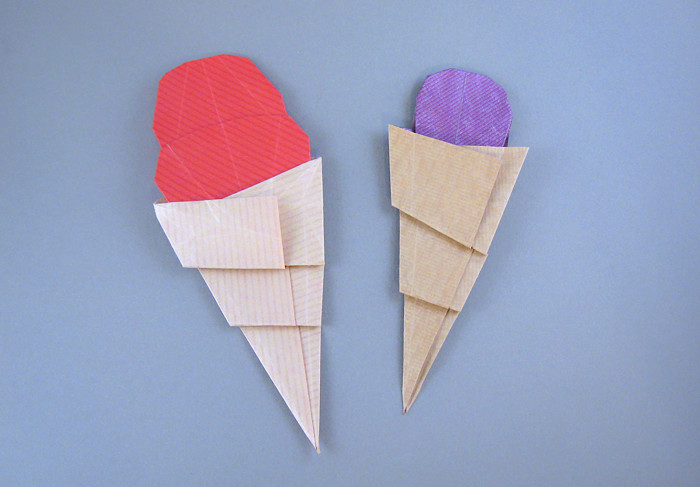
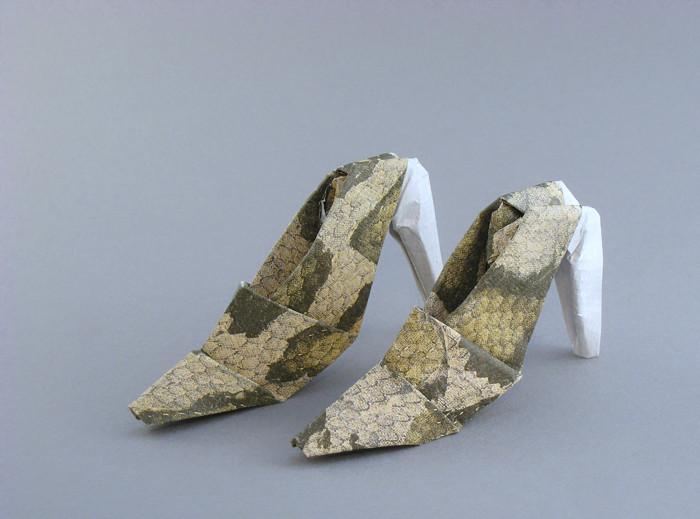
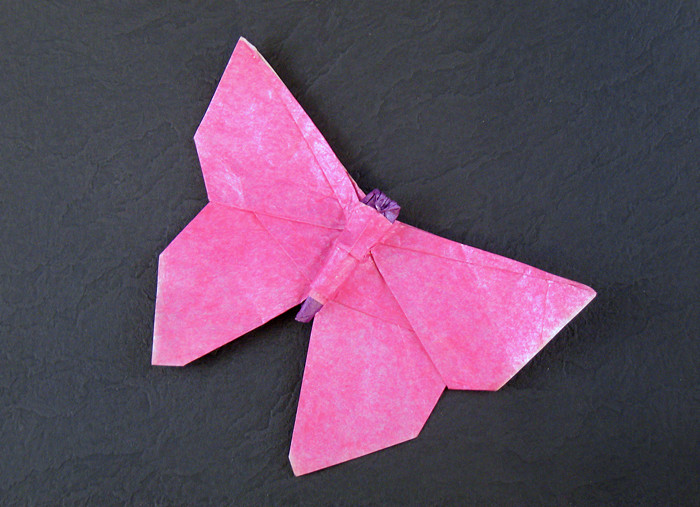
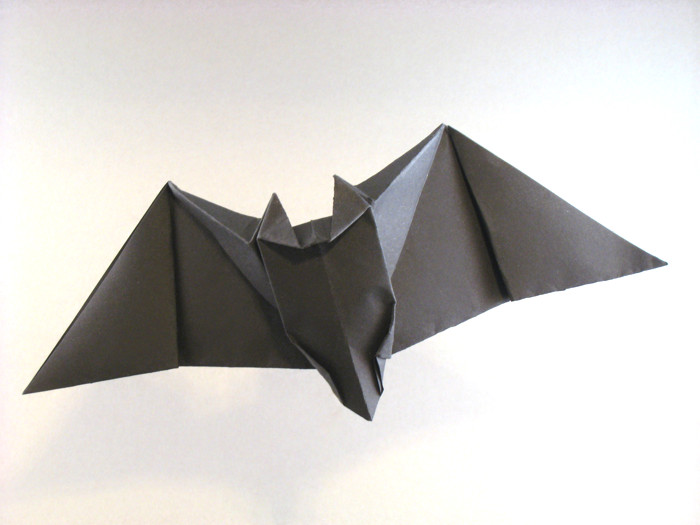
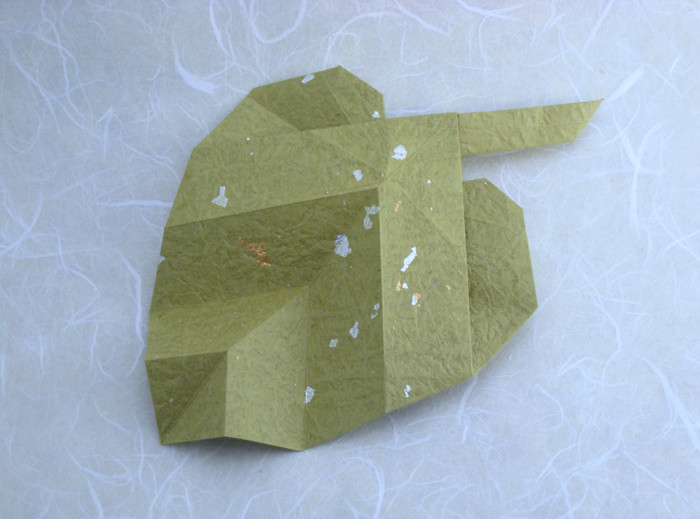
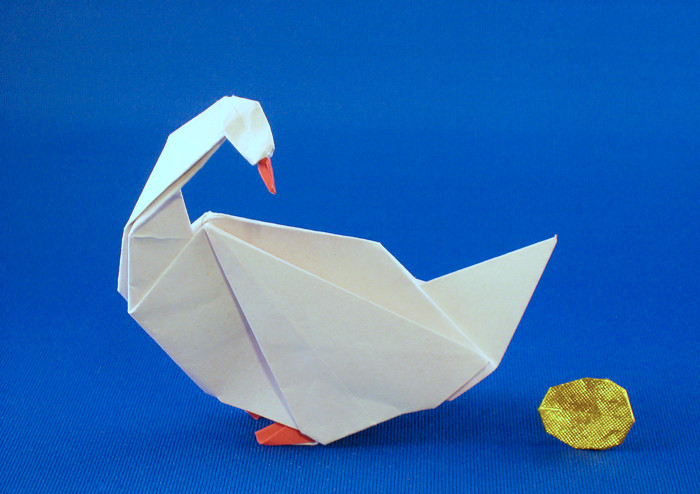
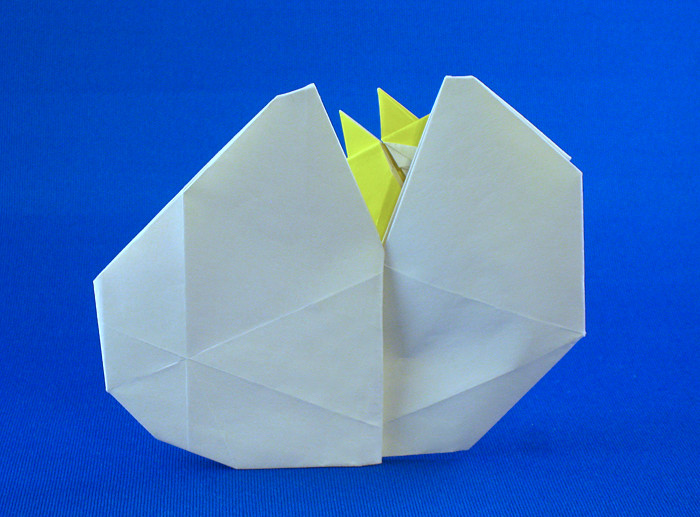
It's great to see a new book from Peter Engel, author of inspirational Origami from Angelfish to Zen. This book is very different in concept, though, and focuses on folds that are more approachable and less complex than it's older sibling. The overall design quality of the book is very high, with excellent color photographs throughout.
The title, however, is somewhat misleading, as the models in the book hardly qualify to be "10-folds". I even feel that this 10-step restriction got in the way of the clarity of the diagrams, which break into "sub-steps" or cram several folds into one step to keep the step-count below ten. For this reason I believe some models may be quite confusing to new folders, which is a shame because the models in this book are pretty good! Some fun themes like food items and a goose that lays golden eggs, solid animals design, and a great chick-in-an-egg make this book essential for the enthusiast.
Subscribe to NewsLetter
Get the latest updates via EmailService provided by FeedBurner
Search This Blog
Catelogy
- 3D Origami (14)
- Book by Tanteidan Convention (16)
- Book-eBooks (353)
- Collection CP Satoshi Kamiya (17)
- Collection Diagram Sipho Mabona (1)
- Collection Diagram by BRIAN CHAN (9)
- Collection Diagram by Ekaterina Lukasheva (13)
- Collection Diagram by HOJYO TAKASHI (18)
- Collection Diagram by Halle (18)
- Collection Diagram by Issei Yoshino (14)
- Collection Diagram by Komatsu Hideo (24)
- Collection Diagram by Manuel Sirgo Alvarez (54)
- Collection Diagram by NguyenHungCuong (8)
- Collection Diagram by Robert J.Lang (68)
- Collection Diagram by Roman Diaz (21)
- Collection Diagram by Satoshi Kamiya (48)
- Diagram of Cartoon Origami 1 (10)
- Diagram of Cartoon Origami 2 (8)
- Diagram of Imaginando en papel (21)
- Diagram of Issei Super Complex Origami (14)
- Diagram of LICENCE TO FOLD (19)
- Diagram of Origami Insect II (16)
- Diagram of Origami for Interpreters (19)
- Diagram of Papiroinsectos y otros origamis exóticos (30)
- Diagram of Tanteidan Convention 14 (15)
- Diagram of Tanteidan Convention 15 (25)
- Diagram of Tanteidan Convention 16 (4)
- Diagram of The complete book of origami (35)
- Diagram of Works of Satoshi KAMIYA 1995-2003 (19)
- Diagram of World of Super Complex Origami (4)
- Diagrams of Origami Sea Life (15)
- Modular Origami (19)
- Origami Animals Diagrams (138)
- Origami Authors (6)
- Origami Bird Diagrams (28)
- Origami Book 2010 (4)
- Origami Book by Halle (3)
- Origami Book by Manuel Sirgo Alvarez (2)
- Origami Book by Robert J.Lang (10)
- Origami Book by Satoshi Kamiya (4)
- Origami Book of Meenakshi Mukerji (2)
- Origami Book-eBooks (30)
- Origami Butterfly Diagrams (4)
- Origami CP (16)
- Origami Cartoon Diagrams (23)
- Origami Complex Diagram (6)
- Origami Diagram (319)
- Origami Dinosaur Diagrams (18)
- Origami Dragon Diagrams (26)
- Origami FANTASY Diagrams (39)
- Origami Fish Diagrams (23)
- Origami Flower Diagrams (10)
- Origami HORSE Diagrams (9)
- Origami Human Diagrams (19)
- Origami Insect Diagrams (71)
- Origami Intermediate Diagram (25)
- Origami Kusudama Diagrams (16)
- Origami Mask Diagrams (4)
- Origami Object Diagrams (13)
- Origami Sea-Water Diagrams (26)
- Origami Simple Diagram (8)
- Origami Super Complex (4)
- Origami Swan Diagrams (4)
- Origami book by Tomoko Fuse (89)
Blog Archive
-
►
2010
(836)
-
►
November
(22)
-
►
Nov 19
(8)
- Making Origami Puzzles - Michael G. LaFosse
- Origami Activities - Michael G. LaFosse
- Making Origami Cards - Michael G. LaFosse
- Making Origami Birds - Michael G. LaFosse
- Making Origami Masks - Michael G. LaFosse
- Picture Perfect Origami - Nick Robinson
- Storytime Origami - John Montroll
- 10 Fold Origami - Peter Engel
-
►
Nov 19
(8)
-
►
November
(22)











